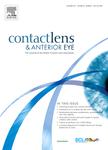版权所有:内蒙古大学图书馆 技术提供:维普资讯• 智图
内蒙古自治区呼和浩特市赛罕区大学西街235号 邮编: 010021

作者机构:Department of Chemistry and Chemical Engineering Zhongkai University of Agriculture and Technology Guangzhou 510225 Guangdong No. 24 Dongsha Street Fangzhi Road Haizhu Dist. China School of Pharmacy and Biomolecular Science University of Brighton Brighton BN2 4GJ Moulsecoomb United Kingdom School of Materials Science and Engineering Northwestern Polytechnical University Xi'an 710072 Shanxi No. 127 Youyixi Road China
出 版 物:《Contact Lens and Anterior Eye》 (Contact Lens Anterior Eye)
年 卷 期:2008年第31卷第2期
页 面:57-64页
学科分类:1002[医学-临床医学] 1010[医学-医学技术(可授医学、理学学位)] 100212[医学-眼科学] 10[医学]
主 题:Contact lens Hydrogels Ophthalmic drug delivery system
摘 要:Only about 5% of drugs administrated by eye drops are bioavailable, and currently eye drops account for more than 90% of all ophthalmic formulations. The bioavailability of ophthalmic drugs can be improved by a soft contact lens-based ophthalmic drug delivery system. Several polymeric hydrogels have been investigated for soft contact lens-based ophthalmic drug delivery systems: (i) polymeric hydrogels for conventional contact lens to absorb and release ophthalmic drugs;(ii) polymeric hydrogels for piggyback contact lens combining with a drug plate or drug solution;(iii) surface-modified polymeric hydrogels to immobilize drugs on the surface of contact lenses;(iv) polymeric hydrogels for inclusion of drugs in a colloidal structure dispersed in the lens;(v) ion ligand-containing polymeric hydrogels;(vi) molecularly imprinted polymeric hydrogels which provide the contact lens with a high affinity and selectivity for a given drug. Polymeric hydrogels for these contact lens-based ophthalmic drug delivery systems, their advantages and drawbacks are critically analyzed in this review. © 2007 British Contact Lens Association.